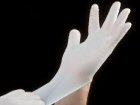
The Commission published today a report on patient safety which focuses on the state of implementation of a number of actions to increase patient safety agreed to by the EU's member states in 2009. Patient safety means that patients are not exposed to unnecessary harm or potential harm associated with healthcare, including the prevention and control of healthcare associated infections.
The report concludes that Member States have implemented various measures such as embedding patient safety in public health polices and identifying competent authorities on patient's safety; however more effort is needed towards actions targeting patients, e.g. patient empowerment, and health professionals, e.g. more education and training. The report also shows that the economic crisis slowed down the implementation because of changing public health priorities. The crisis should not undermine patient safety: for the sake of the patient and because unsafe care has a cost: research shows that between 13 and 16% of hospital costs are due to healthcare related injuries and ill health. In the current financial context it is crucial to reduce the costs of unsafe care and to develop cost-effective patient safety programmes. On the prevention and control of Healthcare associated infections, 26 out of 28 responding countries have implemented a combination of actions to prevent and control such infections, in most cases (77 %) in the context of a national/regional strategy and/or an action plan.
Thirteen Member States reported that the adoption of the Recommendation had triggered initiatives on Healthcare associated infections, in particular on implementation of inter-sectoral mechanisms, on monitoring and assessing strategies to prevent and control infections, and on strengthening information campaigns towards healthcare workers. The report also shows that a number of areas need particular attention. More efforts are needed to ensure adequate numbers of specialised infection control staff, receiving regular training, and with dedicated time for this task in hospitals and other healthcare settings. Tailored basic infection prevention and control structures and practices in nursing homes and other long term care facilities should be reinforced. Finally, information on Healthcare associated infections to patients should be improved and their involvement in the compliance with infection prevention and control measures should be strengthened.
